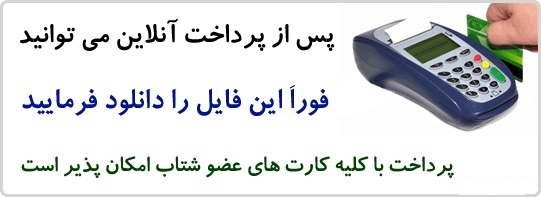تحقیق درباه Backup of پرورش قارچ روی سوبستر استریل شده.wbk
با فرمت word
قابل ویرایش و پرینت
تعداد صفحات : 37
فرمت : wbk
نمونههای وحشی قارچ کاملا با نمونههای پرورشی آن فرق دارند. دلیل نبود نور و یقه اطراف بطریهای برگشت قارچهای پرورشی مجبور میشوند تا ریشههای طویلی را پرورش دهند. این موضوع در این کتاب مورد بحث قرار میگیرد زیرا پتانسیل بازار قابل توجه میباشد و تکنیک پرورش شبیه به دیگر قارچهای از بین برندة چوب میباشد. پرورش تجاری قابل توجه را میتوان در تایوان، ژاپن و چین یافت. قارچ «فلامولینا» در آمار مربوط به تولید جهانی در سال 1984/1983 رتبة چهارم را دارد و در سال 1991 بعد از قارچ دگمه سفید، شیستاک، قارچ کاه برنجی و یوریکولاریا رتبة ششم را دارا میباشد. قارچهای پرورشی زمستانی ساقههای بسیار طویلی دارند و نسبت به قارچ وحشی رنگ روشنتری دارند. آسیاییها به این نوع قارچ علاقة فراوانی دارند و به آن نام قارچ سوزن طلایی را دادهاند. ساقه بخش اصلی این قارچ را تشکیل میدهد و به صورت مصنوعی ساقة آن طویل شده است. ساقة این نوع قارچ مانند ساقه، قارچ وحشی محکم نمیباشد و بنابراین میتوان آن را به راحتی خورد. این نوع قارچ به عنوان یک محصول زمستانی کشت میشود و در صورتی که شرایط کشت آن فراهم باشد، در دورة یک ساله کشت میشود.
مواد: اکثر قارچهای فلامولینا در بطریها کشت میشوند. اگرچه از کیفهای پلاستیکی نیز میتوان استفاده کرد. بطریهای پلی پروفیلن معمولاً دارای 450 گرم سوبستر مرطوب میباشند. این بطریها را میتوان در مجاورت گرما قرار داد. در گذشته از بطریهای شیشهای استفاده میشد، این بطریها به آسانی میشکستند، اما میشد که از این بطریها چندین بار استفاده کرد، این بطریها به وسیلة کلاهکهای پلاستیکی فروخته میشد، و از طریق کاغذ فیلتر هوای آن تأمین میشد. میتوان از این کلاهکها مجدداً استفاده کرد، اما باید فیلتر کاغذ را مرتباً کنترل کرد تا دچار پارگی و شکستگی نشود. ماشینهای مخصوص برای رسیدگی به این بطریها ساخته شدند. کشت قارچ فلامولینا در تایوان از سازندگان اسپاون مشتق شد که از این ماشینها برای پر کردن بطریهای تخم ماهی استفاده میکردند. به دلیل اینکه تولید اسپاون فقط در سه ماه از سال انجام میشد، پرورشدهندگان این نوع قارچ در مورد نحوة کاربرد چنین ماشینهایی به صورت مؤثرتر فکر ردند. در صورتی که از کیفهای پلاستیکی استفاده شود 500 گرم سوبستر باید درون آن پر کرد و کیفها باید به شکل کپسولی باشند.
مواد سوبستر: در طبیعت قارچ فیلامولینا فقط روی درختان پهن برگ رشد میکند. در ژاپن و تایوان از خاک اره مخروطیان استفاده میشد. اما این خاک اره به مدت یک سال تلنبار میشد تا تخمیر در آن صورت گیرد. رزینها و فنولها با شستن جدا میشوند و خاک اره در طول این زمان تجزیه میشود، بنابراین مادة مناسب بهتری به دست میآید. سپس خاک ارة مخروطیان با خاک ارة سخت پوستان تازه به نسبت 1:1 مخلوط میشود. از مخلوطهای کریپتومر یا جاپونیکا، کاماراسی پاریس، پینوس spp، با کرناتا یا کوارکس سرتا میتوان استفاده کرد.
شایعترین ذخیرة مورد استفاده برنج میباشد اما از دیگر منابع کربوهیدرات نیز میتوان استفاده کرد. ترکیبات پروتئینی و آمونیاکی به عنوان منبع مناسبی میباشند، برخی از عناصر ردیاب مانند Ca، Mo، Co، Cu، Zn، Mn و Fe ویتامین برای رشد قارچ و تشکیل بخش میوهای آن لازم میباشد.
فرمول سوبستر: خاک ارة درختان مخروطی - میزان 45%، خاک اره سختپوستان 45%، برنج 10 تا 20%، میزان آب 58 تا %60 CaCo3 1 تا 3% در صورتی که خاک ارة سختپوستان به آسانی در دسترس باشد قارچ فلامولینا قادر خواهد بود که روی محیطی که دارای 80 تا 90% خاک ارة سخت پوست و 10

لینک دانلود Backup of پرورش قارچ روی سوبستر استریل شده.wbk پایین
تحقیق در مورد Backup of پرورش قارچ روی سوبستر استریل شده.wbk
